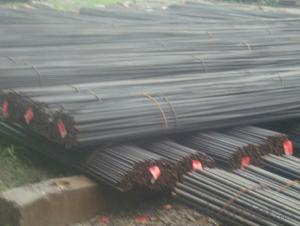Rebar, also known as reinforcing bars, plays a crucial role in the construction of concrete structures. It’s like the backbone of the structure, providing strength and stability. In this article, we will explore the essential components of rebar and how they contribute to the overall integrity of a concrete structure.
The Composition of Rebar
Rebar is made from steel, which is an alloy of iron and carbon. The carbon content in rebar ranges from 0.2% to 2.1%, which gives it the necessary tensile strength. The steel is then processed to create bars of various shapes and sizes, with the most common being round bars. The surface of the rebar is usually ribbed or smooth, depending on the application.
Why Rebar is Necessary
Concrete is strong in compression but weak in tension. Rebar is used to counteract this weakness by providing tensile strength to the concrete. When concrete is subjected to tension, the rebar takes the load, preventing the concrete from cracking or breaking.
Types of Rebar
There are several types of rebar, each with its own specific purpose:
– Straight Rebar: Used for general reinforcement in concrete slabs, walls, and columns.
– Hooked Rebar: The hooks help to anchor the rebar in the concrete, providing additional grip.
– Tied Rebar: Bundles of rebar are tied together with wire to create a stronger reinforcement system.
– Deformed Rebar: The deformations on the surface of the rebar increase the bond between the rebar and the concrete.
Properties of Rebar
The properties of rebar are crucial for its performance in a concrete structure. Some of the key properties include:
– Tensile Strength: The ability of the rebar to withstand pulling forces without breaking.
– Yield Strength: The point at which the rebar begins to deform plastically.
– Elastic Modulus: A measure of the rebar’s stiffness.
– Ductility: The ability of the rebar to deform without breaking under stress.
Manufacturing Process of Rebar
The manufacturing process of rebar involves several steps:
1. Melting: The raw materials, mainly iron ore and scrap steel, are melted in a furnace.
2. Refining: The molten steel is refined to remove impurities and adjust the carbon content.
3. Continuous Casting: The refined steel is cast into a continuous strand, which is then cooled and cut into billets.
4. Rolling: The billets are rolled into the desired shape and size of the rebar.
5. Heat Treatment: The rebar is heat-treated to improve its mechanical properties.
6. Coiling or Cutting: The final product is either coiled for storage or cut into specific lengths for use in construction.
Applications of Rebar in Construction
Rebar is used in a wide range of construction applications, including:
– Buildings: High-rise buildings, residential buildings, and commercial buildings.
– Bridges: Both small and large bridges require rebar for reinforcement.
– Infrastructure: Roads, tunnels, and dams are some examples of infrastructure projects that use rebar.
– Industrial Construction: Factories, warehouses, and other industrial structures often use rebar for added strength.
Maintenance and Inspection of Rebar
Proper maintenance and inspection of rebar are essential to ensure the longevity and safety of the concrete structure. Regular inspections should be conducted to check for signs of corrosion or damage. If any issues are found, they should be addressed immediately to prevent further deterioration.
The Future of Rebar
As construction techniques and materials continue to evolve, so does the use of rebar. New advancements in rebar technology, such as the use of high-strength steel or the incorporation of smart sensors, are being developed to improve the performance and efficiency of rebar in construction projects.
In conclusion, rebar is an indispensable component in the construction of concrete structures. Its unique properties and applications make it a vital element in ensuring the strength, stability, and durability of these structures. By understanding the composition, types, properties, and manufacturing process of rebar, we can better appreciate its importance and the role it plays in our built environment.

